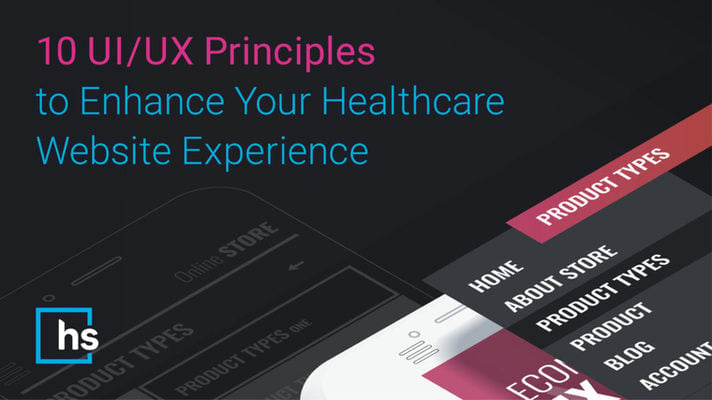
Is your website easy to use? Is it intuitive?
Is it pleasant to interact with while also effectively delivering the information your consumers need?
A successful website employs key UI/UX principles beyond beautiful pages.
UI/UX ensures your website is
In this post, I’ll cover 10 UI/UX design basics that can positively impact your healthcare business.
But first…
In healthcare, UI/UX principles can apply to various software, products, and services, from electronic health records to appointment scheduling apps. However, this post will focus on UI/UX design for websites.
UI and UX are two different concepts that go hand in hand in website design.
Here’s a breakdown of each:
UX refers to the user's interaction with a product, including how they feel about it. Good UX makes people look forward to using your website, reinforces your competence, and improves user satisfaction. It helps determine how users get from point A to point Z.
On the other hand, best practices for user interface design refer to the structural components of the navigation, the buttons, the colors, and the type.
It’s hard to have one without the other. UX organizes the site information and establishes how the site is navigated. At the same time, UI works on top of the UX to make the UX easily understood and traversed. Together, UI/UX principles of website design can either boost your site to success or push it down into a failure.
The basics of UI/UX help to
Now that we understand the differences between UI and UX design in healthcare, here are my favorite tried-and-true principles for creating a great website.
Even the best digital marketing won’t work if your site isn’t intuitive and easy to use. UX and UI are fundamental design principles for any successful website. Whether you’re rebranding or developing a new site, make sure your website's foundation is solid with UI/UX design best practices.
Stewart Gandolf
Chief Executive Officer
The original version of this page was published at: https://healthcaresuccess.com/blog/healthcare-advertising-agency/10-ui-ux-principles-to-enhance-your-healthcare-website-experience.html
Founded in 2006, Healthcare Success is a respected, full-service brand performance marketing agency focused on healthcare and recognized as a thought-leader in the industry.
Introducing PHYGITAL: It’s More than a Marketing BuzzwordOK…we admit that it’s a freshly-minted word, but PHYGITAL recognizes an increasingly useful trend in marketing. ...read more
Coronavirus Notice to Clients and Prospective ClientsHealthcare Success remains fully operational and open for business despite the COVID-19 pandemic. We have taken the proper precautions ...read more
Paid search (aka pay-per-click or PPC) often yields the highest ROI of any digital advertising medium. Our agency, therefore, manages Google Ads for dozens of our clients. Google ...read more
While many businesses long for a return to pre-COVID normal, savvy healthcare organizations and health systems embrace virtual and digital services that champion a patient engagement ...read more